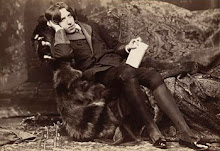We understand Time starting by the feeling that our inner life (Thoughts, feelings) is always changing. Every change is made in time and every phenomenon has limits in time.
The philosophers had understood time as an
interval between two different events, or medium,
substance, in which events were happened.
There are also some definitions concerning our way to relate to time:
subjective time or
objective time.
There were also some opinion which
denied that time exist. Saint Augustine said that time has only one dimension: the present – and we all know his opinion had influenced the youth of the 80es – as well as the epicurean scholars –
Carpe diem – is a well known quote. Why? Because the past has already gone, we just got a present memory of the past events; the future is only a present waiting for the events will happen.
Newton has understood time as an
essence independent from the things; Leibniz on the other hand has understood time as a
relationship between things. Only in that way we can perceive the time, only in this way time has reality.
Debate is still continue in the modern age with Kant who understand time as a
inner objectivity, some kind of medium, intuition. He said time and space are the category of our sensibility. Without these categories, we cannot live and understand the world as an existence.
Κάνοντας μια συνεισφορά στην τηλεδιάσκεψη Ελευσίνας – Γιαννιτσών με θέμα το χρόνο, η κα Ραντουλέσκου μας έστειλε μια σύνοψη των θεωριών περί χρόνου, από τον Ιερό Αυγουστίνο που είδε το χρόνο σαν ένα συνεχές παρόν, μέχρι τον Νεύτωνα, τον Λάιμπνιτς και τον Καντ, που όρισαν ο καθένας με άλλο τρόπο το χρόνο, σαν υποκειμενικό βίωμα ή σαν αντικειμενική αλήθεια. 
There are some opinions talking about time as a cultural meaningful. In Romania,
Lucian Blaga and Mircea Vulcanescu have written about the Romanian feeling of existence, which is related to time. There is, following them, a national, cultural, meaning of time. We, as Balkans we got different social behavior, only because we understand time in another way. We are living into a continuum present….that why we are always late.
Click o n the clock to read a discussion summary in the Greek Library on the theme of Time in our novels with Maria Vergou and Maria Gerandreou.Πατήστε στο ρολόι για να διαβάσετε την περίληψη της συζήτησής μας για το θέμα του Χρόνου στα δυο γοτθικά μυθιστορήματα που διαβάσαμε.
n the clock to read a discussion summary in the Greek Library on the theme of Time in our novels with Maria Vergou and Maria Gerandreou.Πατήστε στο ρολόι για να διαβάσετε την περίληψη της συζήτησής μας για το θέμα του Χρόνου στα δυο γοτθικά μυθιστορήματα που διαβάσαμε.























